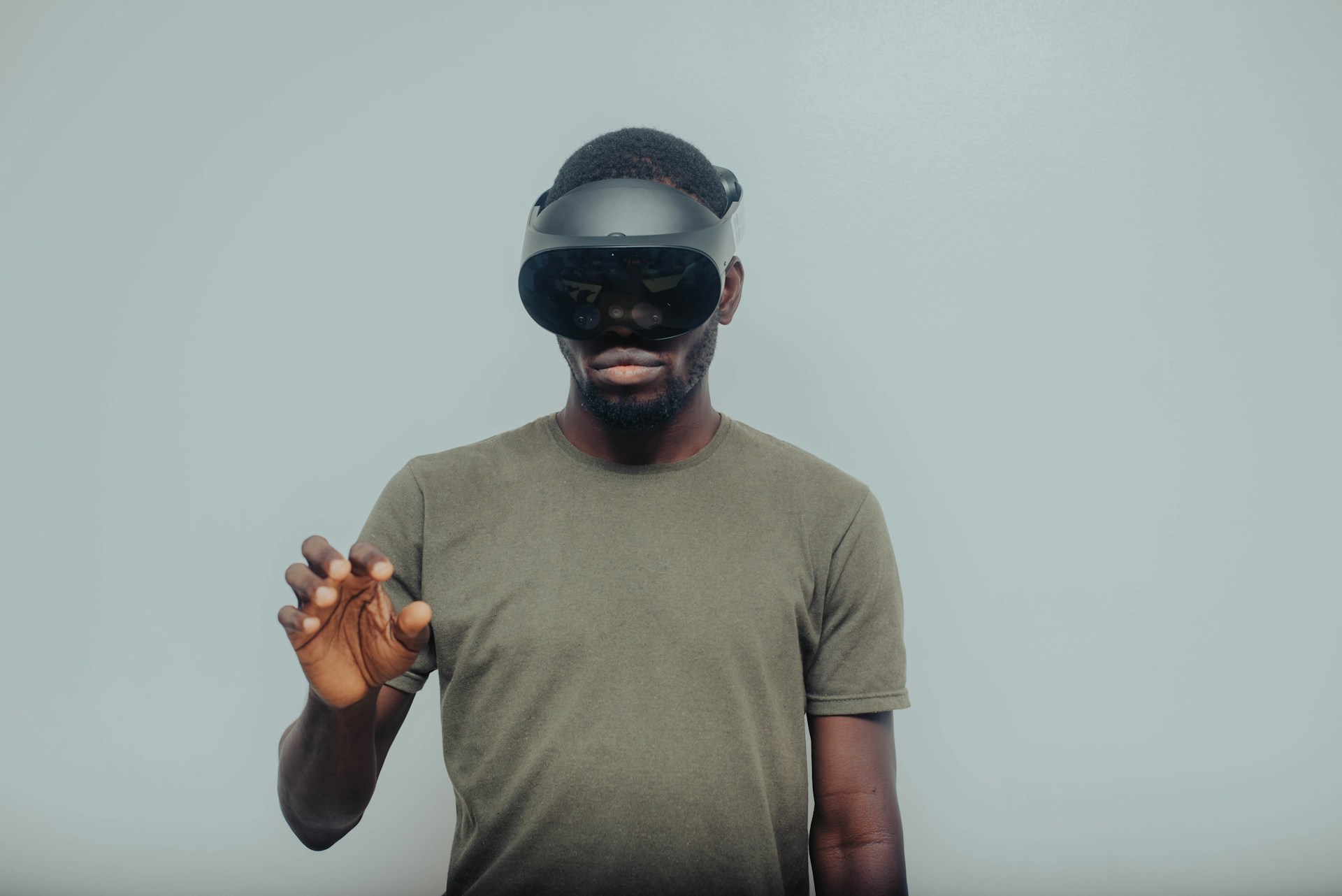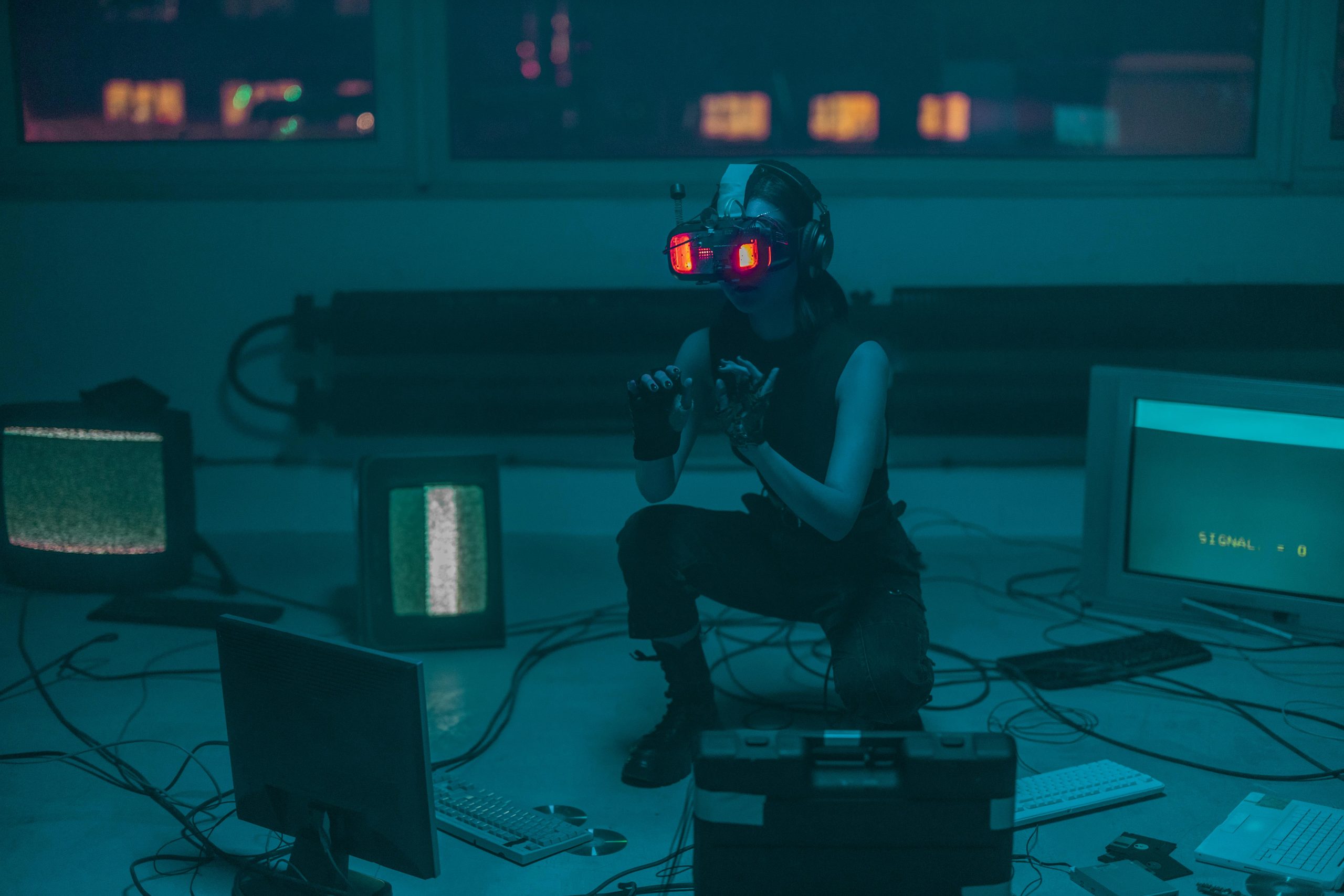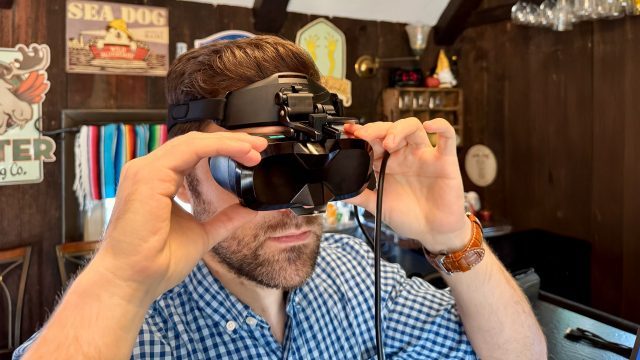Ethical Considerations in Virtual Reality
When delving into the realm of virtual reality (VR), it is crucial to navigate the complex landscape of ethical considerations. As users immerse themselves in these digital environments, questions of privacy, safety, and boundaries come to the forefront. Developers and users alike must be mindful of the potential ethical dilemmas that can arise in VR experiences.
From the collection of personal data for targeted advertising to the risk of psychological harm in immersive simulations, the ethical challenges in VR are multifaceted. Striking a balance between innovation and protecting user privacy is paramount in ensuring that virtual reality technologies are developed and utilized responsibly. As the capabilities of VR continue to evolve, it is essential to establish clear ethical guidelines and regulations to safeguard users and promote a culture of respect within virtual reality communities.
Privacy Concerns in Virtual Reality Experiences
Privacy concerns in virtual reality experiences revolve around the collection and storage of users’ personal data. As users immerse themselves in virtual environments, their behaviors, movements, and interactions are tracked and recorded, raising questions about the extent to which their privacy is safeguarded. The potential for unauthorized access to sensitive information poses a significant risk, as users may unknowingly expose themselves to data breaches or exploitation.
Furthermore, the lack of transparency regarding data usage and sharing practices in virtual reality platforms heightens apprehensions about the protection of users’ privacy. With the integration of biometric data and location tracking technologies into virtual reality experiences, the potential for intrusive data collection amplifies concerns about individuals’ autonomy and control over their personal information. As such, addressing these privacy issues is crucial to fostering trust and accountability in the virtual reality landscape.
Safety Measures in Virtual Reality Applications
Safety in virtual reality (VR) applications is paramount to ensure users can fully immerse themselves in the virtual environment without any risks to their physical well-being. One fundamental safety measure is providing clear guidelines for users on the proper use of VR equipment and emphasizing the importance of taking breaks to prevent issues such as motion sickness or eye strain. Additionally, incorporating features within VR experiences that help users maintain their spatial awareness can prevent accidents or collisions with real-world objects while engrossed in the virtual world.
Another crucial safety measure is conducting regular checks and maintenance of VR hardware to ensure that all components are functioning correctly, reducing the likelihood of malfunctions that could potentially harm users. Moreover, implementing age restrictions and guidelines for appropriate VR usage can safeguard younger users from engaging in experiences that may not be suitable for their developmental stage. By adhering to these safety measures, developers and users alike can enjoy virtual reality technology responsibly, promoting a secure and enjoyable VR experience for all.
Setting Healthy Digital Boundaries in Virtual Reality
In the immersive world of virtual reality, setting healthy digital boundaries is crucial for maintaining a balanced relationship with this technology. It is easy to get lost in the digital realm and lose track of time while engaging in virtual experiences. Therefore, it is essential to establish limits on how much time is spent in virtual reality to prevent it from overtaking real-life responsibilities and social interactions. By consciously managing the duration and frequency of virtual reality use, individuals can ensure that it complements their lives without overshadowing them entirely.
Additionally, creating boundaries when it comes to the content consumed in virtual reality is essential for safeguarding mental and emotional well-being. Not all virtual experiences are created equal, and some may contain intense or disturbing content that can have a lasting impact on users. Being selective about the virtual reality content you engage with can help protect your psychological health and ensure that your virtual experiences are enjoyable and beneficial. Establishing healthy digital boundaries in virtual reality is not about restricting oneself but rather about making intentional choices that support overall well-being.
The Impact of Virtual Reality on Personal Privacy
Personal privacy is a paramount concern in the realm of virtual reality (VR) technology. As users immerse themselves in VR experiences, there is a notable shift in the ways their personal data is collected, stored, and potentially shared. The very nature of VR, which often involves tracking movements, capturing biometric data, and recording interactions, raises important questions about the extent to which individuals can maintain control over their privacy in these digital environments.
Moreover, the rise of VR brings about new challenges in terms of informed consent and data protection. Users may not always be fully aware of the amount and types of data being collected about them while engaging in VR activities. This lack of transparency can lead to potential privacy breaches and concerns regarding the ethical use of personal information in VR applications. As the technology continues to evolve, it becomes increasingly crucial for developers, policymakers, and users to collaborate in safeguarding personal privacy and upholding ethical standards in the VR landscape.
Ensuring User Safety in Virtual Reality Environments
When it comes to user safety in virtual reality environments, developers must prioritize creating experiences that are free from potential harm. This means taking into consideration factors such as motion sickness, eye strain, and ensuring physical surroundings are clear of obstacles that could pose a danger to users while immersed in VR. Providing clear guidelines and warnings for users about potential risks and how to navigate the virtual space safely is essential in fostering a secure environment for all participants.
Moreover, implementing safety features within the virtual reality software itself, such as boundaries that alert users when they are nearing physical obstacles in the real world, can significantly reduce the risk of accidents or injuries. By continuously monitoring and updating safety protocols based on user feedback and advancements in technology, developers can create a safer and more enjoyable virtual reality experience for everyone involved. Prioritizing user safety not only enhances the overall experience but also builds trust and confidence in the technology.
Respecting Boundaries in Virtual Reality Interactions
Respecting boundaries in virtual reality interactions is crucial for creating a safe and respectful environment for all users. As VR technology continues to evolve and become more immersive, it’s important to establish clear guidelines on appropriate behavior to avoid crossing any personal or ethical boundaries. This includes respecting individual preferences for personal space, communication, and interactions within the virtual environment.
By promoting and enforcing these boundaries, users can feel more comfortable and secure while engaging in VR experiences. This not only enhances the overall user experience but also fosters a culture of respect and consideration within virtual reality communities. As developers and content creators, it is essential to prioritize the well-being of users by integrating mechanisms to encourage positive interactions and deter any forms of harassment or infringement on personal boundaries.
Ethical Dilemmas in Virtual Reality Development
Virtual reality development presents a myriad of ethical dilemmas that require careful consideration. One of the primary concerns is the potential for manipulating users’ perceptions and creating experiences that blur the line between reality and fiction. Developers must grapple with questions surrounding the implications of creating highly immersive and realistic virtual environments that have the power to influence individuals’ thoughts and actions.
Another ethical dilemma in virtual reality development involves issues of consent and user autonomy. As VR technology advances and becomes more sophisticated, developers must ensure that users are fully aware of the implications of participating in virtual experiences. This raises important questions about the boundaries of consent in the virtual realm and the need to prioritize user agency and control over their own virtual encounters.
Balancing Innovation with Privacy in Virtual Reality
As virtual reality (VR) technology continues to advance at a rapid pace, the need to balance innovation with privacy considerations becomes increasingly crucial. While VR offers exciting opportunities for immersive experiences and novel applications across various industries, it also raises significant privacy concerns. As developers push the boundaries of what VR can achieve, it is essential to proactively address potential privacy risks to ensure the ethical development and responsible deployment of VR technologies.
One of the key challenges in balancing innovation with privacy in VR lies in finding ways to harness the full potential of the technology while safeguarding users’ personal data. From tracking user movements and interactions to collecting biometric data for adaptive experiences, VR systems have the capacity to gather a wealth of sensitive information. As such, developers must prioritize the implementation of robust privacy features and transparent data practices to maintain user trust and confidence in VR platforms. By adopting a privacy-first approach to innovation, stakeholders can foster a culture of responsible VR usage that safeguards user privacy rights without compromising the transformative power of immersive technology.
Creating Safe Spaces in Virtual Reality Platforms
Creating safe spaces in virtual reality platforms is paramount to ensuring a positive and secure user experience. With the immersive nature of VR technology, users must feel protected from potential harm or discomfort while navigating virtual environments. Developers have a responsibility to implement safeguards that promote safety and respect within these digital spaces, such as tools for reporting inappropriate behavior and mechanisms for setting personal boundaries.
Moreover, fostering a culture of respect and inclusivity in virtual reality communities is essential for creating an environment where all users feel valued and supported. By promoting empathy and understanding among users, VR platforms can become places where individuals from diverse backgrounds can interact and collaborate in a safe and welcoming space. Emphasizing the importance of treating others with kindness and consideration can help cultivate a positive community ethos that enhances the overall virtual reality experience for everyone involved.
Navigating the Ethical Landscape of Virtual Reality Technology
When delving into the realm of virtual reality technology, it is essential to navigate the complex ethical landscape that accompanies this innovative field. As the capabilities of VR continue to expand, questions surrounding data privacy, consent, and boundaries arise with increasing urgency. Developers, users, and policymakers must collaborate to establish clear ethical guidelines that prioritize the protection of individuals within virtual environments.
Moreover, discussions on fairness and inclusivity in virtual reality experiences have gained prominence. Issues such as accessibility for all users, representation in VR content, and the potential for discrimination within virtual worlds require careful consideration. By incorporating diverse perspectives and engaging in open dialogues, the ethical challenges of virtual reality technology can be addressed proactively, paving the way for a more equitable and responsible usage of this groundbreaking technology.
Promoting Responsible Use of Virtual Reality Devices
Virtual reality devices offer immersive experiences that have the potential to revolutionize various industries and entertain millions worldwide. However, with this transformative technology comes the responsibility to promote ethical and responsible use among users. It is essential for developers, manufacturers, and users alike to prioritize safety measures and privacy considerations when engaging with virtual reality environments.
Creating awareness about the potential risks and guidelines for safe usage can help mitigate any adverse effects of prolonged virtual reality experiences. Educating users on setting healthy digital boundaries, understanding the impact on personal privacy, and respecting ethical considerations in virtual interactions are crucial steps towards fostering a culture of responsible use within the virtual reality community. By establishing clear guidelines and promoting ethical behavior, we can ensure that virtual reality remains a safe and enjoyable space for all users.
Understanding the Risks of Privacy Violations in Virtual Reality
Virtual reality technology opens up a world of immersive experiences and interactions, but along with its benefits come potential risks to users’ privacy. As users engage with virtual environments, they may unknowingly expose personal information or behaviors that could be exploited or misused. From tracking movements and behaviors to capturing sensitive data, the risks of privacy violations in virtual reality are varied and complex.
One concern is the collection and storage of personal data within virtual reality experiences. Users may not be aware of how their data is being collected, who has access to it, or how it is being used. This lack of transparency can lead to privacy violations, especially if sensitive information falls into the wrong hands. Additionally, the potential for cyberattacks or data breaches within virtual reality platforms adds another layer of risk to users’ personal privacy.
Implementing Privacy Policies in Virtual Reality Products
Privacy policies are crucial components of virtual reality products that outline how user data is collected, stored, and shared. These policies serve as a transparency mechanism, informing users about the measures in place to safeguard their personal information. By clearly articulating these practices, virtual reality developers can establish trust with their audience and promote responsible use of their products.
Furthermore, implementing robust privacy policies not only ensures legal compliance but also demonstrates a commitment to protecting user privacy. As virtual reality technology continues to advance, it is essential for companies to stay proactive in updating their policies to address evolving privacy concerns. By prioritizing user privacy and security, virtual reality products can create safer and more trustworthy experiences for consumers.
Enhancing User Safety through Virtual Reality Regulations
Virtual reality (VR) technology has opened up new possibilities for creativity, entertainment, and communication. However, as the use of VR continues to expand, ensuring user safety within these immersive environments has become a top priority. To address this concern, regulations specific to virtual reality are being developed to outline the guidelines and standards that companies and developers must adhere to in order to protect users from potential harm.
These regulations cover a wide range of safety aspects, from ensuring the physical well-being of users during VR experiences to safeguarding their personal data and privacy. By implementing clear rules and standards, regulators aim to create a safer and more secure virtual reality landscape for users to explore and interact with confidence. As the technology evolves and becomes more integrated into our daily lives, these regulatory measures will play a crucial role in shaping the ethical framework of virtual reality and promoting responsible use among both creators and consumers.
The Intersection of Virtual Reality, Ethics, and Law
Virtual reality technology has rapidly advanced in recent years, offering immersive experiences that blur the lines between the physical and digital worlds. As this technology continues to evolve, ethical considerations and legal implications become increasingly crucial. Issues such as data privacy, user safety, and content creation raise complex questions at the intersection of virtual reality, ethics, and law.
When exploring the ethical landscape of virtual reality, developers and users alike must navigate a multifaceted terrain. The collection and use of personal data in virtual reality experiences raise concerns about consent, data security, and potential misuse. Moreover, the content created and shared in virtual environments can impact individuals’ perceptions, behaviors, and even societal norms, underscoring the need for ethical guidelines to ensure responsible creation and consumption of virtual reality content.
Protecting Personal Data in Virtual Reality Experiences
When engaging with virtual reality experiences, users often provide personal data either willingly or unknowingly. This data can include information about their location, behaviors, and preferences, which may be used for various purposes by the creators of the virtual reality platforms. It is crucial for developers to prioritize the protection of this personal data to ensure user privacy and prevent any potential misuse or breaches that could compromise the security of individuals.
Implementing robust data protection measures, such as encryption and secure storage protocols, is essential in safeguarding personal information in virtual reality experiences. Additionally, developers should be transparent about the data they collect and how it will be used, providing users with clear information and options to control their privacy settings. By respecting user confidentiality and maintaining stringent data security practices, virtual reality platforms can cultivate trust among their users and uphold ethical standards in handling personal data.
Establishing Trust in Virtual Reality Systems
Virtual reality systems have the potential to revolutionize various industries and enhance user experiences significantly. However, to fully capitalize on the benefits of this technology, establishing trust in virtual reality systems is paramount. Users must feel confident that their data and privacy are protected while using these immersive platforms.
Creating transparent policies regarding data collection, storage, and usage is essential in gaining users’ trust in virtual reality systems. Companies developing virtual reality applications should prioritize user privacy and security by implementing robust data protection measures. By being upfront about how user information is handled and ensuring compliance with data protection regulations, virtual reality developers can build trust with their audience.
Ethical Guidelines for Virtual Reality Content Creators
Virtual reality content creators play a crucial role in shaping the virtual experiences of users. It is imperative for creators to uphold ethical standards in their content development to ensure the well-being and safety of users. When creating virtual reality content, it is essential to consider the potential impact on individuals and society as a whole. Content creators should strive to create immersive and engaging experiences while being mindful of the ethical implications of their creations. This includes respecting user privacy, promoting diversity and inclusion, and avoiding harmful or offensive content that could have negative consequences on users.
In addition to considering the ethical implications of their content, creators should also prioritize transparency and honesty in their virtual reality experiences. This includes providing clear information about data collection practices, ensuring informed consent from users, and being upfront about any potential risks or limitations of the content. By adhering to ethical guidelines and practices, virtual reality content creators can contribute to creating a positive and responsible virtual reality ecosystem that prioritizes the well-being and safety of all users.
Fostering a Culture of Respect in Virtual Reality Communities
Respect is a foundational element in fostering positive interactions within virtual reality (VR) communities. As users navigate digital realms, it’s crucial to uphold values of empathy, understanding, and consideration for others. In these virtual spaces, where boundaries may blur between the digital and physical worlds, fostering a culture of respect can contribute to a more inclusive and welcoming environment for all participants.
By promoting respectful behavior in VR communities, we can create spaces that prioritize the well-being and dignity of all users. Encouraging kindness, tolerance, and open communication can help mitigate conflicts and enhance the overall user experience. As VR technology continues to evolve and gain popularity, nurturing a culture of respect becomes increasingly important in shaping the social dynamics and relationships within these immersive digital landscapes.




